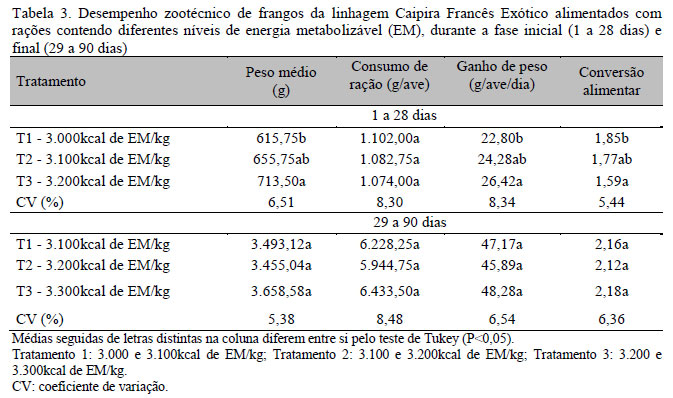This is study aimed to analyze the effects of metabolizable energy (ME) and age at slaughter on growth performance, carcass yield and prime cuts, relative weight of the wings, back, head + neck and feet of broiler chickens from the Caipira Francês Exótico strain. A total of 192 birds were distributed in a completely randomized design with three treatments and four replicates of 16 birds per treatment. The treatments were defined according to levels of dietary energy (1 to 28 days) and late (29-90 days), respectively: T1 - 3000 and 3100kcal/kg ME, T2 - 3100 and 3200kcal/kg ME, T3 - 3200 and 3300kcal/kg ME. The slaughter was carried out at 77, 84 and 90 days. In the initial phase the birds from T2 and T3 had a higher mean weight (655.75 and 713.50g), weight gain (24.28 and 26.42g/bird) and better feed gain (1.59 and 1.77) and did not differ (P>0.05). When slaughtered at 77 days of age, birds fed the diet with 3.100/3.200kcal/kg ME had higher carcass yield (82.20%) and breast (24.26%), and did not differ from chickens fed diets containing 3.000/3.200kcal/kg ME, where a carcass yield of 80.72% and 23.20% of breast yield was found. The Caipira Francês Exótico broilers had better growth performance and carcass yield than when fed diets containing 3100-3200kcal/kg in the diet and slaughtered at 77 days old.
broilers; carcass yield; dietary energy; master gris; performance





